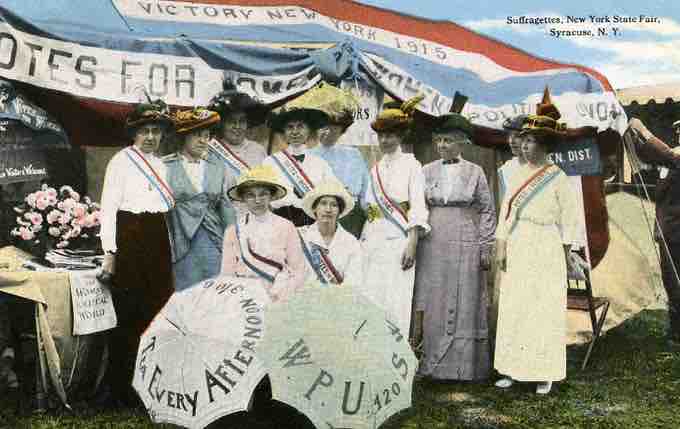Women Versus Men
There are a variety of theories that help to explain who votes. Institutional approaches look at the ways in which legal documents and organizations impact and shape the ability to vote. Other approaches examine the question of the rationality of voting: does voting serve the self-interest of any given individual, and what are the interests or issues that might change someone's voting patterns? A behavioral approach focuses more on the actions of individuals and groups, taking voting as one part of a larger bundle of political activities. It is useful to combine these ideas when thinking about women's and men's voting patterns.
For a large part of the history of the United States, women were denied their right to vote. Women were not allowed to vote in all elections until the Nineteenth Amendment to the US Constitution. Ratified in 1920, this amendment prohibited any citizen from being denied the right to vote based on their sex.
In spite of this long-term institutional barrier to voting, women today vote at similar rates to men. Women also do not generally vote as a bloc, and instead tend to be as diverse in their voting patterns as men. Characteristics such as race, ethnicity, age and socioeconomic status tend to predict voting patterns better than gender. Even when considering so-called "women's issues", such as reproductive choices and rights or equal pay legislation, women do not vote as a bloc. Instead, while they may identify these issues as more important than men, women tend to be split over the correct solutions to a problem. However, there are exceptions, such as around any questions of war and/or the use of violence.
The high rates of women's involvement in voting (in spite of being excluded from voting for so long) can be partially explained by women's high involvement in other forms of political participation. This includes the suffrage movement that saw women organizing and campaigning to win women the right to vote. Additionally, women share many of the same interests as men in comparable positions, and so, similarly to men, women with more education and higher income will vote at higher rates than women in different positions.

Suffragettes
Women across the US organized for decades to gain the right to vote for women.
While women vote at a similar rate to men, they are underrepresented in other forms of political participation, such as joining organizations like political parties and running for public office.